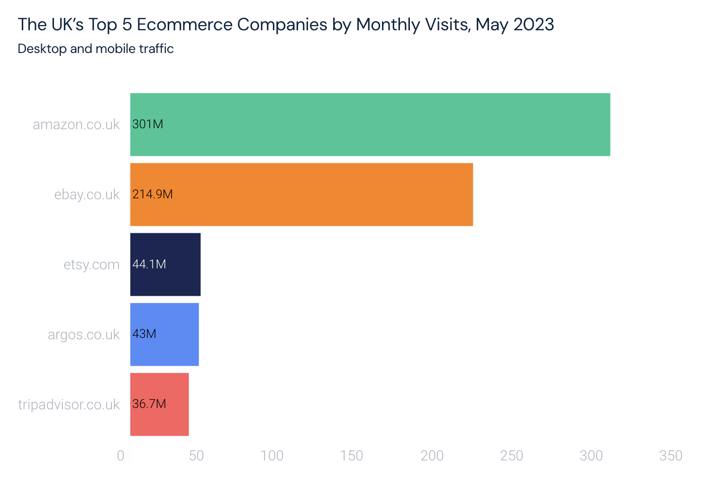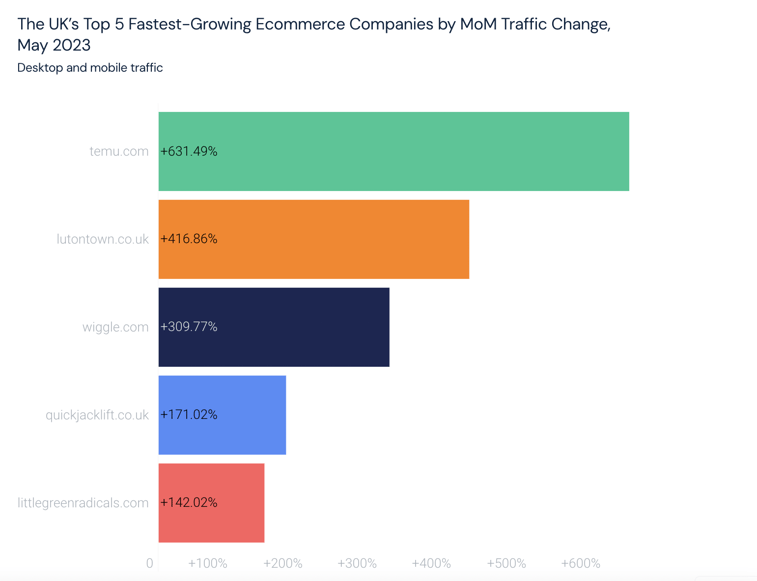It is essential that every company has an online presence nowadays. A person may not be stepping out of their house today, but they are definitely on their phone 24/7. Keep reading to understand all the keywords related to e-commerce, and different forms of e-commerce that you can apply to your company.
- What is E-commerce?
- Vertical vs Horizontal Marketplaces
- 7 Types of E-commerce
- Trends in 2024
- E-commerce keywords to look out for in 2024
What is E-commerce?
E-commerce (Electronic Commerce) is the buying and selling of goods and services through the Internet.
Vertical vs Horizontal Marketplaces
What is the difference between e-commerce and online marketplace?
An e-commerce only has one selling on the platform, where the site owner is generally the only seller who takes care of storage, processing payments, logistics, etc. Marketplace is an extension of e-commerce where the platform allows third-party sellers to sell on the platform.
Vertical Marketplace
Transactions between businesses from similar industries, providing specialized products or services.- Examples: Airbnb, Uber
|
Pros |
Cons |
|---|---|
| Specialization: Deep industry knowledge can lead to more effective matchmaking and value-added services for users. | Scale Challenges: Especially if the industry it serves is relatively small or has a limited number of businesses. |
| Niche Targeting: Connecting with a targeted audience can lead to better sales and partnerships. | Limited User Base: Making it more challenging to find buyers or sellers, especially in smaller or highly specialized industries |
| Higher Trust: Customers are dealing with businesses that are more likely to understand the specific needs and challenges of the industry. | Market Fragmentation: With multiple platforms catering to different niches within the same industry. This can make it more difficult for participants to decide where to focus their efforts |
Horizontal Marketplace
Transactions between businesses from different industries.- Example: amazon.com
| Pros | Cons |
|---|---|
| Diverse Customer Base: Able to lead to a larger customer base, increasing the platform's potential for growth and revenue. | Complex Operations: Each category may require different strategies, suppliers, and logistics, making operations more challenging. |
| Economies of Scale: Economies of scale can reduce operational costs and potentially offering lower prices to customers. | Seller and Product Quality: Maintaining quality control becomes essential to maintain trust among customers. |
| Data Insights: Enabling better analytics and insights to enhance the user experience and make informed business decisions. |
Brand Dilution: Offering too many diverse products can dilute the marketplace's brand identity and messaging, making it less focused and cohesive. |
| Brand Recognition: Making it easier to attract customers and sellers alike. | Customer Confusion: Overwhelming to navigate a platform with a large variety of offerings, which can lead to confusion and frustration. |
7 Types of E-commerce
Whether you're an aspiring online entrepreneur or an established business owner looking to expand your online presence, understanding these e-commerce categories is crucial. Embracing the right e-commerce model for your specific goals and target audience can be the key to your online success.
1. B2C (Business-to-consumer)
Goods and services are sold directly from businesses to consumers, the end users, with no middlemen involved.
Examples: Amazon, Uber, Netflix, The New York Times Co. and eBay.
Online B2C Business Models
Direct sellers- This is the most common model where businesses sell directly to consumers.
Ex. Small business owners selling their handmade products in a market.
- When a business doesn’t produce a good or service itself, instead it acts as the matchmaker between seller and buyer.
Ex. Expedia, Etsy, and trivago.
- When a business places online advertisements of their product or service on their website and then uses free content to attract visitors to their website.
Ex. HuffPost
- When a business sells to a group of consumers with common interests.
Ex. A dog treats business selling on a dog lover FB group.
- When a business charges consumers to access its content, sometimes with free but limited content.
Ex. Netflix, The New York Times
2. B2B (Business-to-business)
Goods and services are sold from businesses to other businesses.- Examples: British Steel selling steel rails to Midland Metro Alliance.
3. B2G (Business-to-government)
Goods and services are sold from businesses to federal, state, or local agencies- Examples: British Steel selling steel to public construction companies for the construction of public schools.
4. C2B (Consumer-to-business)
When the consumers(end users) provide the businesses with goods and services.- Examples: Influencers get paid to advertise a product through social media.
5. D2C (Direct-to-consumer)
When a business manufacture, market, and sell its own product in its own facility and channel. They skip over wholesalers, distributors, and retailers, managing all by themselves.
6. C2C (Consumer-to-consumer)
Goods and services are exchanged between consumers, a model that has emerged with technology and the sharing economy- Examples: Craigslist, Etsy, eBay, and other auctions and classified advertisements.
7. B2B2C (Business-to-business-to-consumer)
Essentially a combination between business-to-business (B2B) and business-to-consumer (B2C). It is a collaboration process where goods and services are sold from one business to another, then retailed to the consumers.- Examples: App Store.
Trends in 2024
Global E-commerce growth
In 2021, retail e-commerce sales totaled around 5.2 trillion U.S. dollars worldwide, and this figure is estimated to further increase by 56% over the next few years, reaching about 8.1 trillion dollars by 2026.
Biggest E-commerce in the world in 2023
amazon.com is the largest e-commerce in the world. On average, people visit 9 pages on amazon.com per visit, and each visit lasts 7:08min.
In second place is ebay.com. People visit 7 pages on average per visit, and each visit lasts 6:50min.
In third place is amazon.co.jp. Amazon has been the largest online retailer since 2000 according to onepatch.
E-commerce in the United Kingdom
Amazon has a clear monopoly over online shopping in almost every country in the world, including the UK. This e-commerce giant is a horizontal e-commerce that sells different goods to different businesses in different industries. Therefore, they are able to leverage economies of scale to provide even more range of goods for their consumers and at better quality.

Source: similarweb
Temu is a Chinese e-commerce platform that went online in September 2022, and in just over six months, it has captured tens of millions of users. Yet, this stunning growth came at what cost? Temu rose in fame because of its lower-than-low prices of goods shipped directly from Chinese factories and warehouses. To sustain the prices, Wired estimated that Temu's orders to the U.S. lost an average of $30(around £25) per order.
Source: similarweb
E-commerce keywords to look out for in 2024
Artificial intelligence and machine learning
- Enhancing customer service, personalization, and predictive analytics to a new level.
Sustainability
- Efforts are more significant than ever, with eco-conscious consumers demanding eco-friendly products and sustainable supply chain practices.
Metaverse and virtual reality
- Redefining the online shopping experience, offering immersive and interactive platforms for consumers.
Cryptocurrencies and blockchain technology
- Making headway, providing secure and borderless payment solutions.
Supply chain optimization and last-mile delivery innovations
- Critical to meet growing customer expectations for fast, reliable, and environmentally friendly shipping.
As e-commerce continues to evolve, businesses need to embrace these trends to stay competitive and meet the evolving needs of tech-savvy consumers in 2024.







